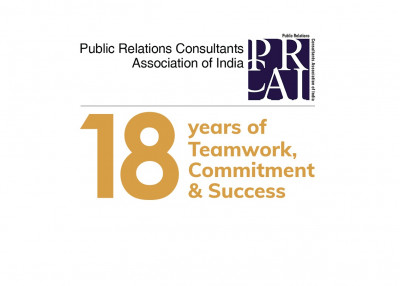PRCAI issues fresh set of advisory for media engagement by PR groups
The Public Relations Consultant Association of India (PRCAI) has issued fresh set of advisory for Public Relations and Corporate Communications groups while engaging with the media during the current situation.
In its advisory, PRCAI noted that the media landscape has drastically changed since the COVID-19 outbreak. In these tough times, journalists are also hard pressed to perform their duties under challenging circumstances and may have limited time to discuss stories in detail with PR and corporate communication professionals. Some of the inputs received from journalists across newswires and newspapers have indicated tighter deadlines for filing their stories.
The advisory has been compiled by PRCAI based on the information collected from various news reports available online and dipstick done by PRCAI members firms like MSL Group, PR Pundit, The PRactice, Kaizzen and crowdsourced data from KPMG, ICRA, BARC, PR groups like IPRF, OneSource, Media Insights, ICG, The Commune, Media Connect, Media Movements, PR Warriors, PR Exchange and other groups. This is the 2nd advisory taken out by PRCAI.
Also read:
PRCAI launches online campaign to raise awareness on COVID-19
Advisory for media engagement
- Time is important. Like most professionals, journalists are working with limited resources and we need to respect their time now more. Brief, crisp and to the point is the norm and this should be adhered to or else you may miss the plot.
- Connect with a journalist only if you have a relevant and critical information to share. Respect the journalists time, and the lead time. Inform and update in case of delays and avoid “buying” time if you not sure.
- When pitching a story, COVID-19 pandemic is the most relevant topic, but if there is no direct association with the crisis, do not try to make one – maintain social distancing – even in the stories. Share knowledge, but in a positive way and not be seen trying to take advantage of this unfortunate situation. Please don’t force-fit your story. Be sensitive towards the reality of the situation and also about the client’s reputation.
- Research – Research – Research. As a rule, before pitching to any journalist do your homework. Research on the journalist, the publication’s audience, and then only pitch a story if it’s relevant at that point of time. Ensure that you have read something they’ve covered and the sector/beat they’re mainly writing about.
- Check journalist’s social media profiles (if available) on the topical issue they are engaged in, before you pitch them. Respect the journalists’ time and personal space. Remember access to email ids and phone numbers doesn’t give one the right to pitch stories or share information. Please research and find out the status of the publication and employment of the journalist before the call/email.
- Information and timing are critical so have important facts and figures ready to answer the journalist queries. Be brief and to the point r and ensure every interaction adds value to the journalist’s story or research.
- Now with partial “unlock” the media is keen to know what corporates/ brands are doing innovatively for their employees and end customers to ensure continuity of operations. While pitching a story unrelated to the current challenges, make sure you have solid reasons for pitching the story.
- Personalise your pitch by doing some research on the journalist and publication. Avoid writing ‘URGENT’, ‘BREAKING NEWS’, or ‘TIME SENSITIVE’ in email subject lines.
- Avoid mass (bcc) mailing to the media list and mass-forwards (broadcast) on Whatsapp, SMS. Don’t forget to proofread before you send emails.
- Be sensitive to journalist’s privacy and timings while sending text on Whatsapp or SMS. Remember, your urgency might not be a priority for the journalist as they have their own editorial calendars and timelines to follow.
- Updating the media database is important, but avoid calling up the journalist for her/his details. Instead search on web & PR Whatsapp groups, check profile on Linkedin, Muckrack, social media handles, etc.
- Have patience and understand the meaning of silence. Journalists will reply to only those texts in which they feel there is some relevant content for them or it is newsworthy for their editorial.
- With limited mobility, explore video/ email interviews with spokespersons/ experts as several journalists are still working from home and have limited time to interact one-on-one.
- There is a webinar fatigue and journalists have to attend many corporate web events and also news breaks from the government which are now mostly online.
- Remember point No. 4 – now and always.







Share
Facebook
YouTube
Tweet
Twitter
LinkedIn